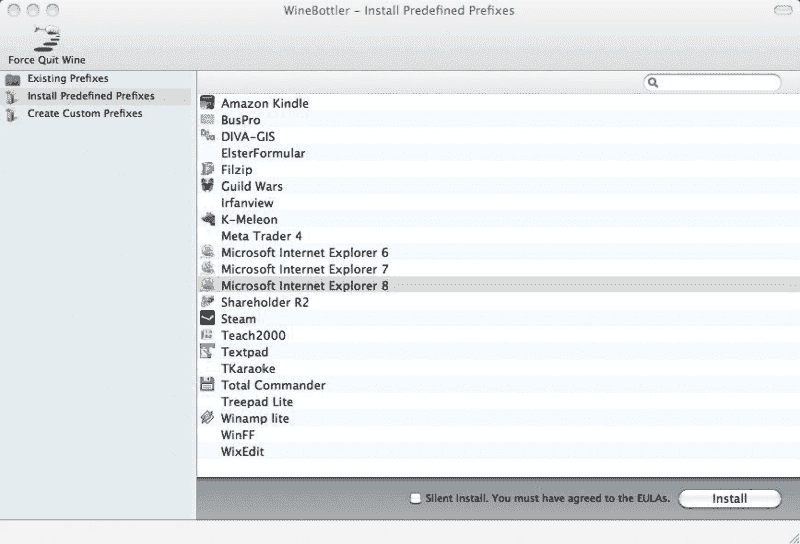Question :
8/10 - Teach2000を無料ダウンロード Teach2000 試験およびシラバスを研究する方法を改善するためにアンケートを作成することができます。ダウンロード Teach2000 無料、あなたは勉強方法が向上します. Download Portable Teach2000 - Craft tests for yourself or others with custom questions on any subject, add sound and visual support before saving them for later use or testing.
I am learning Classical Greek (a.k.a. Ancient Greek) in school, and I want to typ words on my computers (both Mac and PC) to improve my vocabulary.
I found I can add a Greek keyboard layout (on both my Mac and my PC) so I now am able to all Greek letters, but it turns out that this these are Modern Greek letters… these are generally the same, but Modern Greek doesn’t have any of the accents I need in Classical Greek. I especially need to be able to typ the ‘spiritus asper’ (a.k.a. the H-sound accent) and the ‘iota subscriptum’ (a.k.a. the I-sound that can be added to e.g. an Omega).
Is there any way to ‘switch on’ typing Classical Greek on my Mac (and PC) ?
Teach2000 For Mac Free
Answer :
Teach2000 For Mac Download
To be able to typ the accents of Classical Greek, you need to enable the ‘Greek Polytonic’ keyboard.
in macOS, you can activate the Greek Polytonic keyboard by doing this :
- go to Apple-menu (Apple-icon top-left in the menu bar) –> System Preferences –> Keyboard –> Input Sources (tab)
- on the left, your currently installed keyboard-layout(s) is/are listed
- click on the +button just below the list of installed keyboard-layouts
- in the window that opens, in the Search Field, typ “greek”
- on the right, two keyboard-layouts will be listed : “Greek” and “Greek – Polytonic”
- choose “Greek – Polytonic” and click the Add-button
- then make sure there is a check-mark at “Show Input menu in menu bar”
- then exit System Preferences
- now, whenever you want to typ Ancient Greek, go to the little flag-icon top-right in the menu bar and select “Greek – Polytonic” from the dropdown list
- and after you’re done typing Ancient Greek, go to the little black flag with the Epsilon top-right in the menu bar and select your regular keyboard layout from the dropdown list
in Windows 10, you can activate the Greek Polytonic keyboard by doing this :


- go to the Start Button bottom-left and typ “region and language” in the search field, then press Enter
- in the window that opens, at Languages, click “Add a language” and typ “greek” in the search field
- then, select “Greek”
- then, at Languages, select “Greek” and click “Set as default”
- then, at Languages, choose “Greek” and click the “Options”-button
- now, at Keyboards, click “Add a keyboard”
- then, choose “Greek Polytonic”
- to simplify things, I suggest deleting other Greek keyboards from the list of activated keyboards
- then exit
- now you can switch between your main keyboard-layout and the Greek Polytonic keyboard-layout by pressing the {WINDOWS}+{SPACE} key-combo on your keyboard

Teach 2000 For Mac

To get the ‘spiritus asper’ (a.k.a. the H-sound accent) in your Classical Greek text, typ this : {SHIFT}+{ ‘ } to get the ‘spiritus asper’, then the A/E/R/V/Y/H/I/O-key to get the Alpha/Epsilon/Rho/Omega/Upsilon/Etha/Iota/Omicron-letter you need underneath the ‘spiritus asper’.
To get the ‘iota subscriptum’ in your Classical Greek text, typ this : {SHIFT}+{ [ } (in which { [ } is the [-key on your keyboard) to get the ‘iota subscriptum’, then the V-key to get the Omega-letter you need above the ‘iota subscriptum’.
To get the ‘regular sigma’ in your Classical Greek text, typ { S }
Teach2000 For Mac Login
To get the ‘word-ending sigma’ in your Classical Greek text, typ { W }
to get the ‘Greek question mark’ in your Classical Greek text, typ { Q } which will give you the ; (semi-colon) which is Classical Greek for a ? (question mark).
That’s it !
enjoy 😉